Lake Bonneville
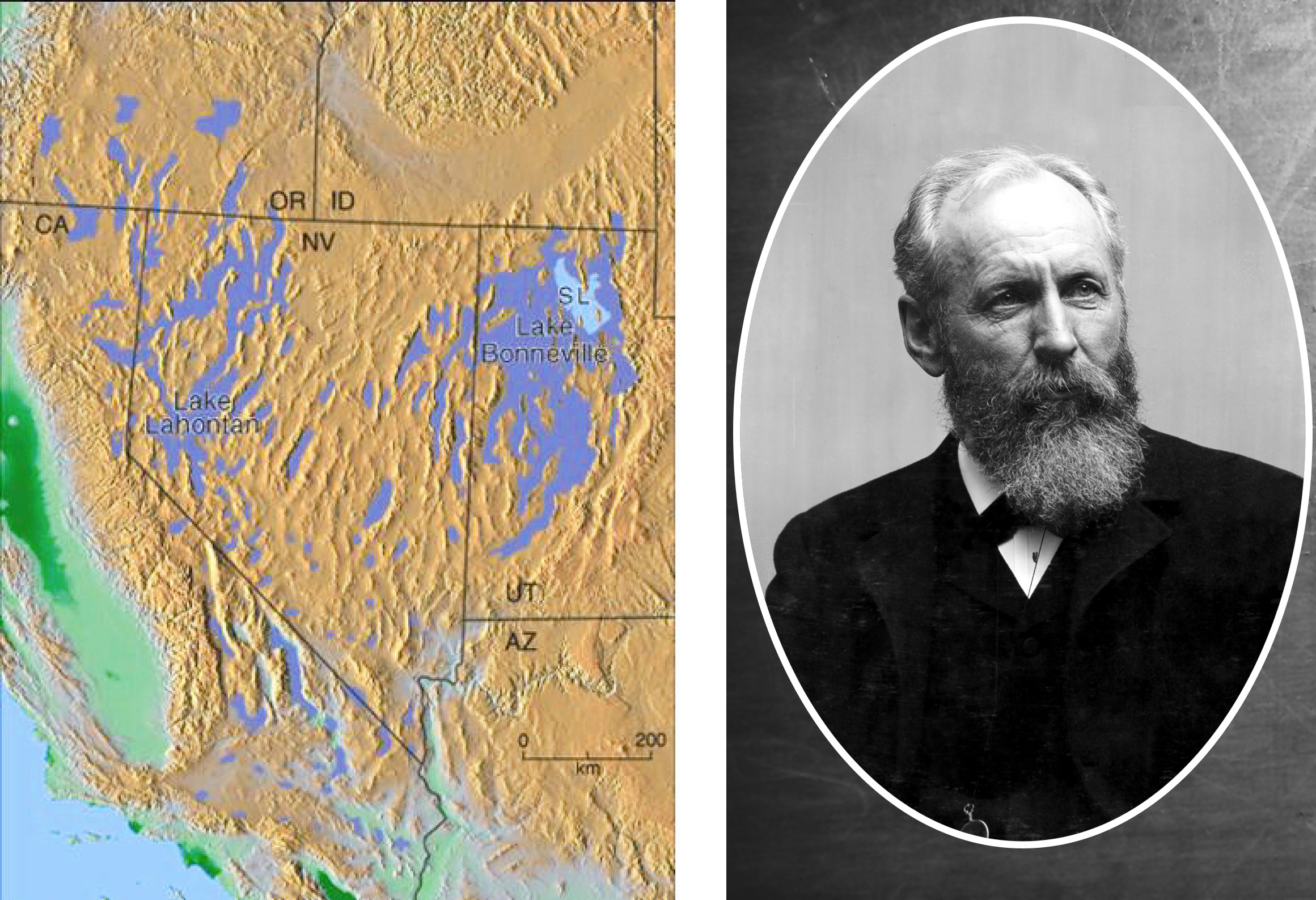 |
Lake Bonneville has been recognized as the premier Late Pleistocene pluvial of the western United States since the time of G. K. Gilbert. As such it has provided significant insight into the climate of the North American continental interior.
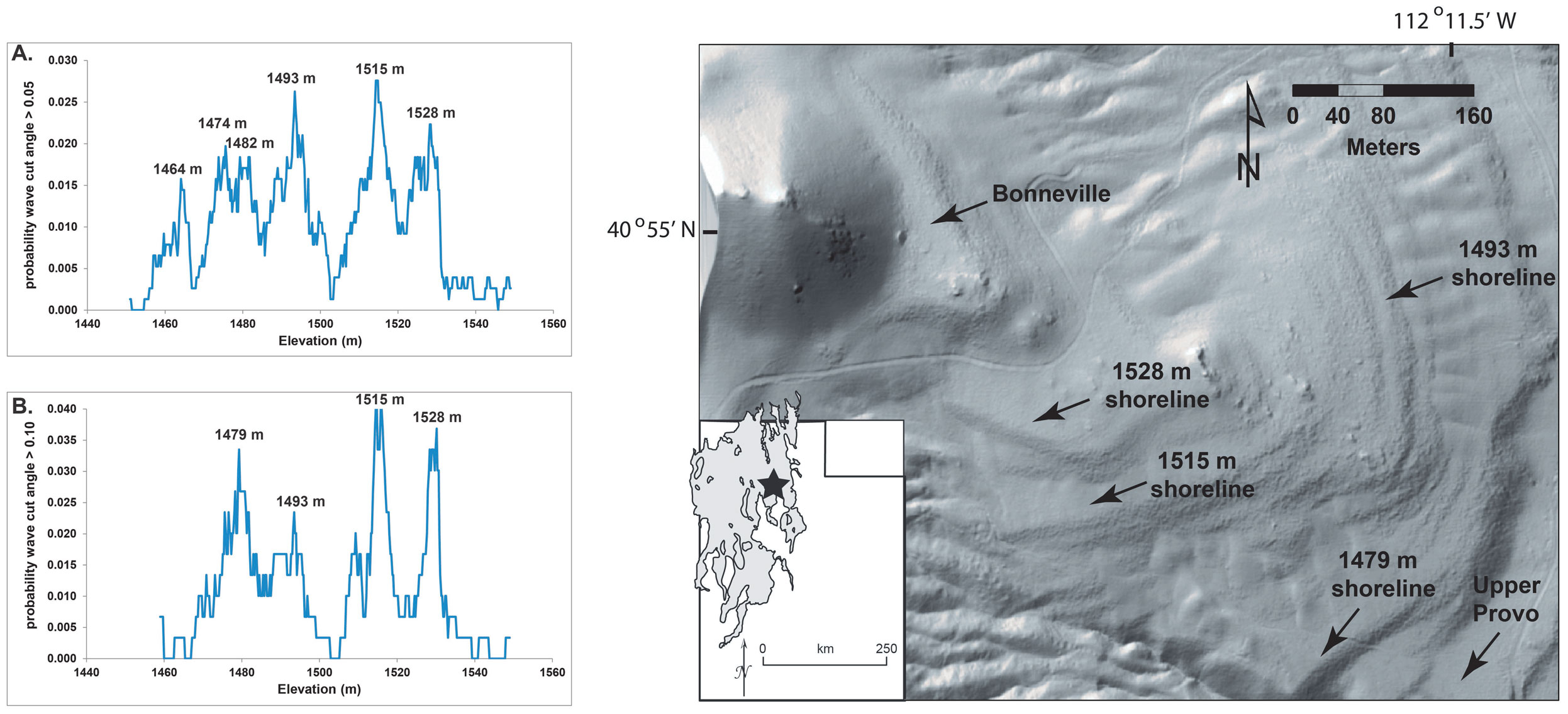 |
Jewell and Jack Oviatt of Kansas State University have recently completed an NSF-funded study of the early transgressive shorelines of Lake Bonneville with special emphasis on the hydrodynamics of wave-formed features. Among the important findings is identification of five shorelines formed during the transgressive phase of the lake prior to formation of the Bonneville shoreline. See 2015 Geomorphology article.
| Daren Nelson completed a Ph.D. in 2012 on the shorelines in the Hogup Bar area of the basin where fieldwork identified two previously unidentified oscillations. |
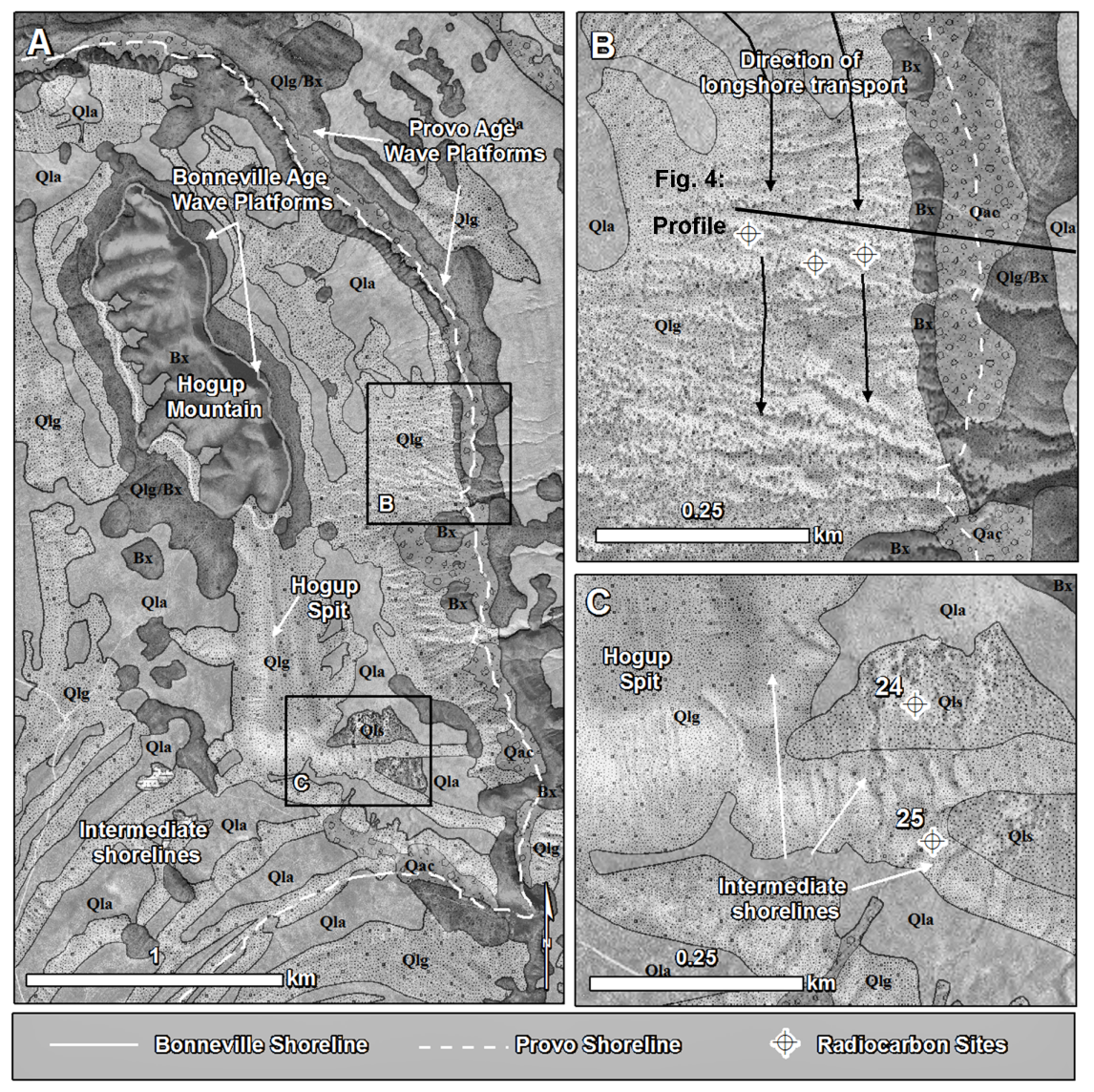 |
Geological map of the Hogup Mountain area (Nelson, 2014). Sample information can be found in Table 1, and location of area in reference to the entire Bonneville basin can be seen in Fig. 1. A. Overview of the Hogup Mountain area (Black boxes indicate the extent of A and B); B. Close up of where profile in Fig. 4 and where radiocarbon samples were collected; C. Close up of beach ridges where radiocarbon samples 24 and 25 were collected. Qlg: Quaternary lacustrine gravels; Bx: Bedrock of the Oquirrh Formation; Qla: Quaternary undifferentiated lacustrine and alluvial deposits; Qls: Quaternary lacustrine sands; Qac: Quaternary alluvium and colluvium
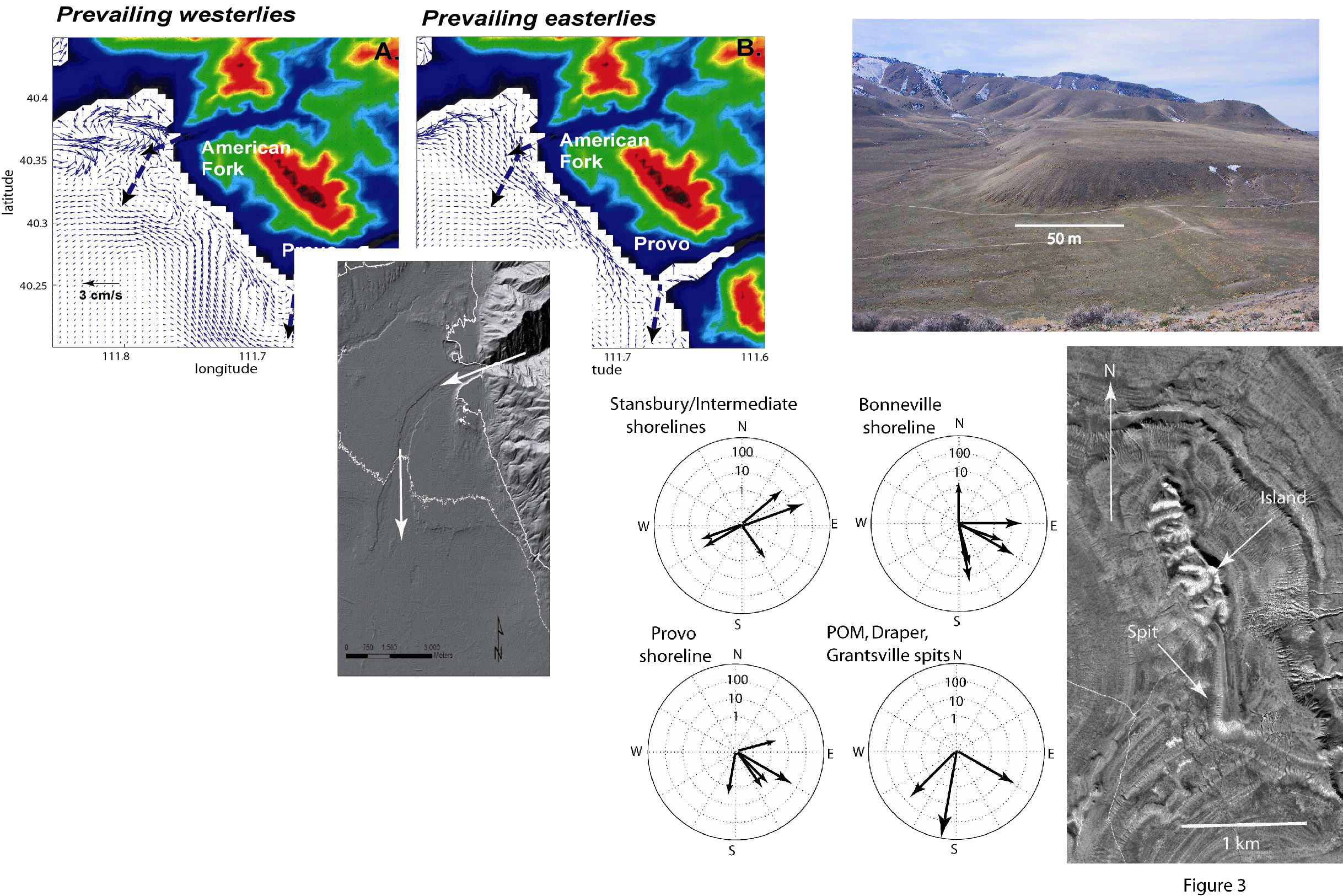 |
Previous work on river incision in Lake Bonneville has resulted in an understanding of the mean circulation and wind directions of the Lake Pleistocene (left diagram) and speculation about the nature of strong storms over Lake Bonneville on the basis of the alignment of spits (right diagrams).
see 2010 P^3 article or 2007 Quaternary Research article
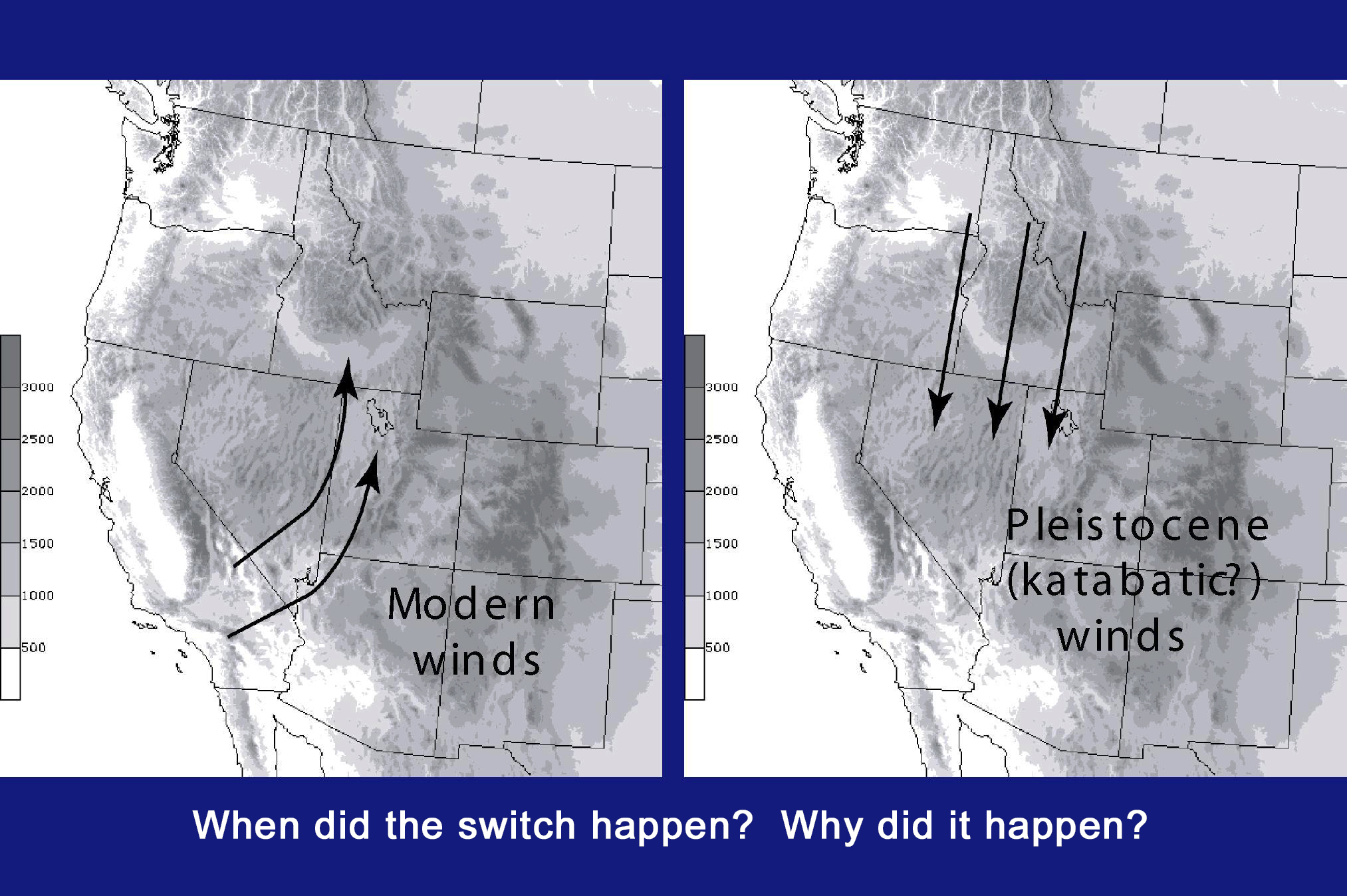 |
A key finding of this work is that the strong winds capable for making geomorphic features were predominantly from the north in the Late Pleistocene which is markedly different from the strong winds of today that are predominantly from the south (see 2011 Geomorphology article)
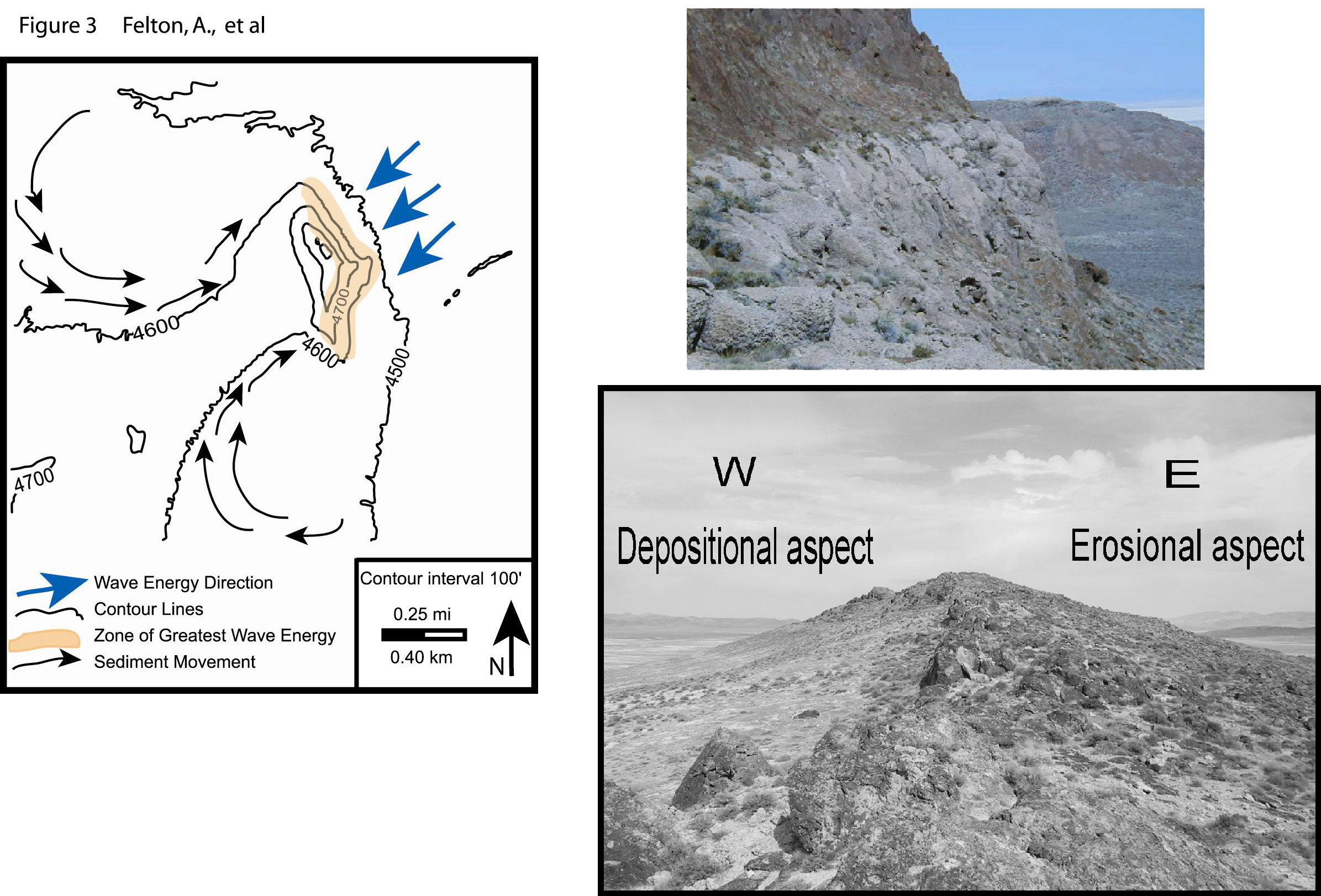 |
Past students who have conducted research on Lake Bonneville include Alisa Felton, who studied the tufas in the lake.
see 2006 Journal of Geology article
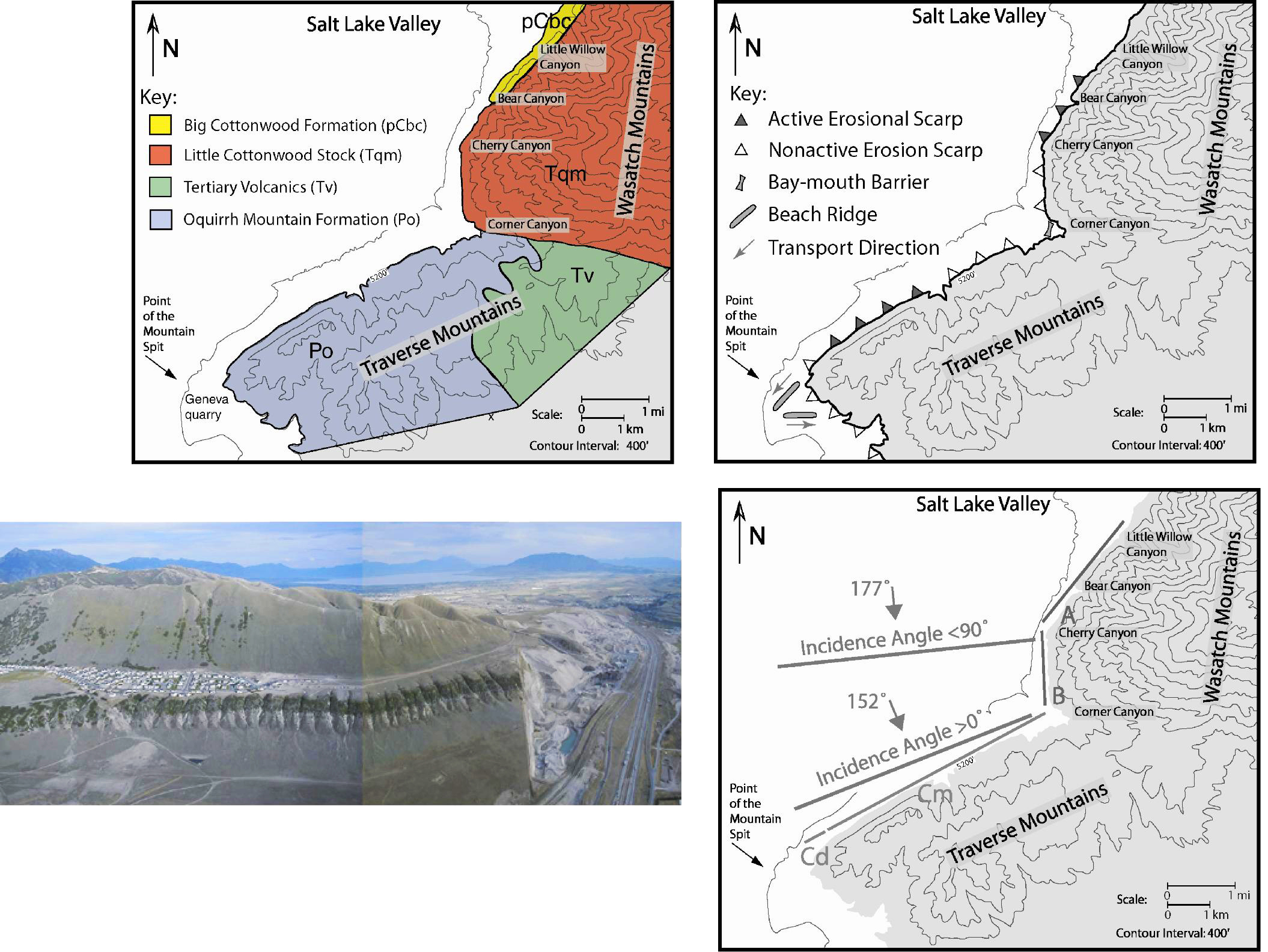 |
Ian Schofield studied two prominent Lake Bonneville spits and their relationship to wave energy in the lake.
see 2004 Earth Surface Processes and Landforms article

